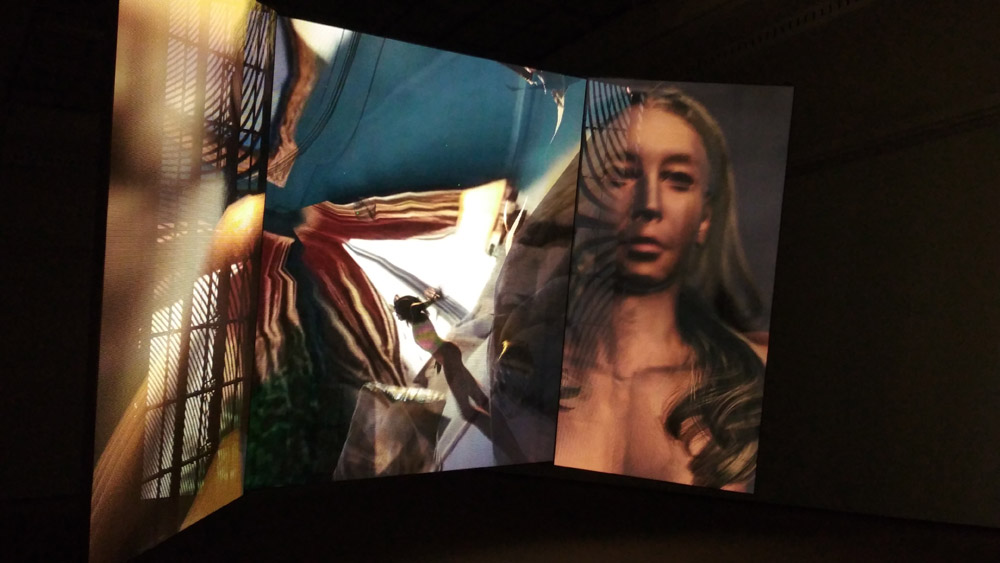Munich, September 8, 2023 – April 28,2024, https://www.hausderkunst.de/

WangShui is an ABC, American born Chinese. Is he from the “East” or the “West”? At least based on the funding of the exhibition by the “Asian Art Circle at the Guggenheim” he still seems to be considered as an Eastern artist.
The most impressive thing about the exhibition was the capital needed to procure the industrial-grade materials that constituted the presentation media for the artwork: Large thick double-layered aluminum sandwich plates that I imagine could be used for building the hulls of a train carriage or airplane. Three huge curved composite low density LED screens, that may as well be found at a recent concert of your favorite pop music megastar. I had to think about the BMW factory museum nearby the Olympic Park, that I passed a day earlier. I imagine that the high-tech displays there use similar presentation technologies.
The reference to the use of “AI” to generate the content of the work made me just roll my eyes. The whole thing had little to do with “AI”. WangShui was just trying to jump on the hype cycle bandwagon. Was the curator so foolish to believe him? Or was the curator himself guilty on jumping on the bandwagon? In any case, this bluff was close to transparent and it considerably increased my prejudice to anything presented to me.
The actual content: Aluminum plates were engraved with abstract images that partially made use of handcrafted optical effects (holography). One could see the gesture of the artists’ (or his assistants) hands as they moved the engraving tools and drills across the surface. The shapes were a combination of biomorphic and architectural. Parts of the plates were also painted. The brushstrokes looked more handmade-crafty than illusionist. A constantly repeating element was a protruding curved object that looked like something between a long animal tongue and a baroque chair leg.

The video featured crudely rigged naked female humanoid personas who moved around randomly in a puppet-like manner. The whole thing probably done in the Unity engine or some similar 3D game design environment. I doubt that anyone needs an “AI” to create this kind of stock virtual actors and sparsely furnished 3D environment. And if the “AI” was used to steer the movements of the figures… well… a simple random function would do equally good.
Overall, because of the aforementioned reasons, I had mixed feelings about it. The material presence and scale was impressive. The engravings on the aluminum plates were interesting but their hand-crafted and delicate nature was somehow in contradiction to he industrial material used as their carrier. The curatorial text talking about AI increased my skepticism about whether this show was actually about conveying a certain meaning/message, or whether it was simply a project where a large amount of resources were used to create a feeling of awe, as Kant would say.









